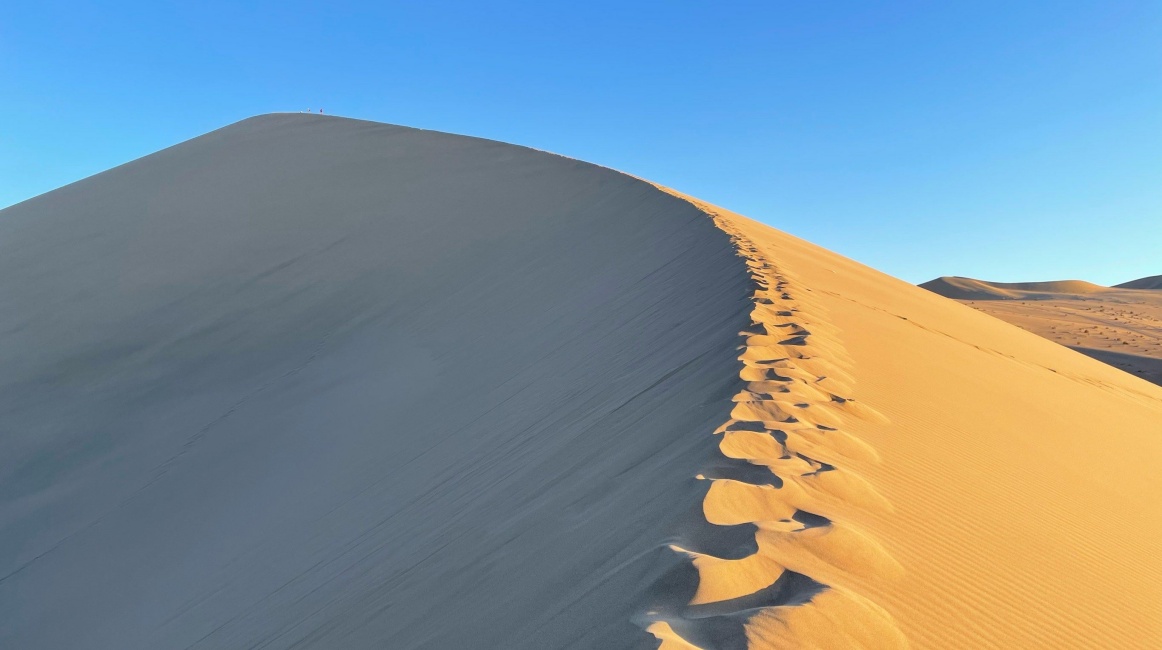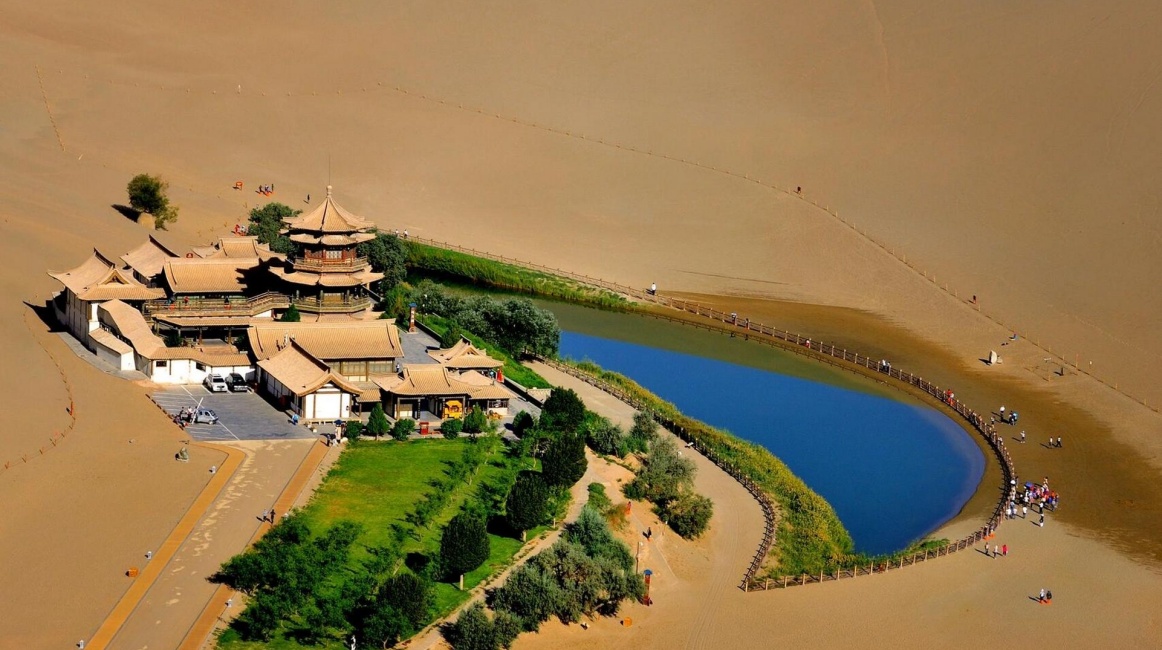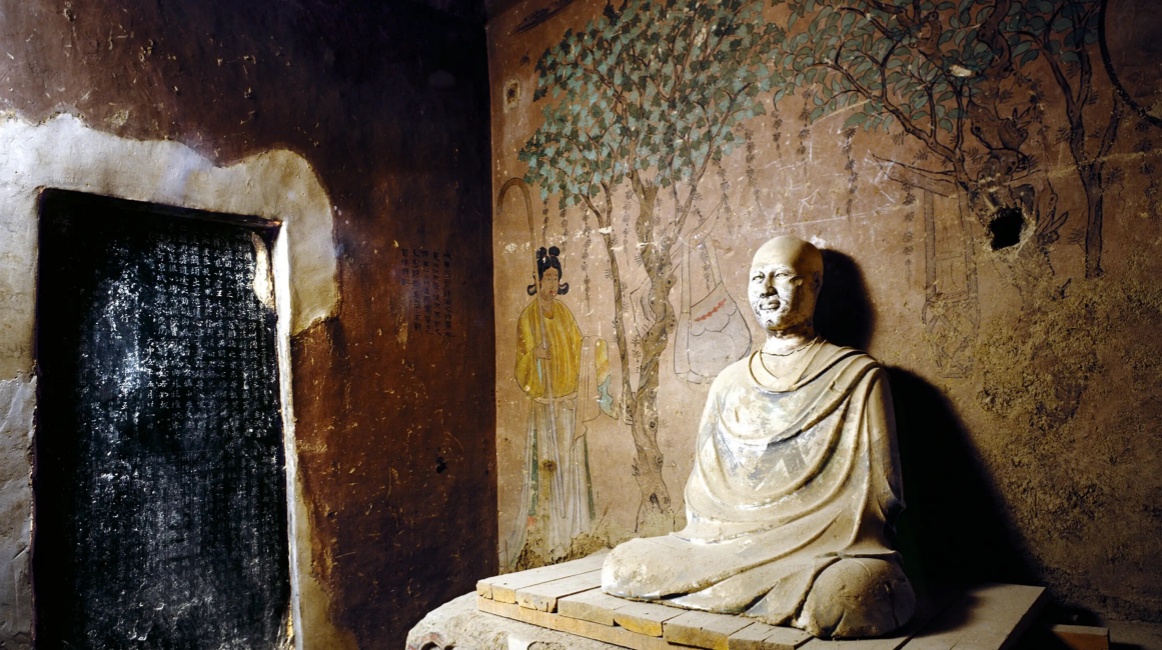The yellow sand is vast and boundless. Dunhuang City lies in this sea of sand, like a tired camel, silently chewing the time of a thousand years.

People who first come to Dunhuang are probably always shocked by the formation of the Mingsha Mountain. The sand mountain is steep, with sharp lines, and it shines golden light under the scorching sun. When the wind blows, the sand grains rub against each other, making a low sound, like the Buddhist sound from ancient times. Sand will flow, and the shape of the mountain you see today will be different tomorrow. The sand grains are very fine, and they slip through your fingers in an instant when you hold them in your hands, just like the time that cannot be held. Tourists like to slide down from the top of the mountain, listening to the sand singing and making happy calls. But the sand mountain is just silent, watching a thousand years of play, and will watch it for another thousand years.

Crescent Lake is nestled at the foot of Mingsha Mountain, a pool of clear water, shaped like a crescent moon. Surrounded by sand mountains, it can never swallow it. The spring water is so clear that you can see the bottom, the water plants are swaying, and a few small fish are swimming around. How long has this spring existed? No one can tell. There is a local legend that this is a tear of the Bodhisattva, which fell into the desert and became a spring that never dries up. When the sun is high in the sky, there is still a little coolness by the spring. There are often old men sitting under the willow trees, half-closing their eyes, playing a desolate tune on the huqin in their hands, echoing with the sound of the wind.

However, the real soul of Dunhuang is still in the Mogao Grottoes. The caves are carved on the steep cliffs, and from a distance, they are as dense as a honeycomb. Walking into the caves, the light suddenly dims, and when the eyes adapt to the darkness, the Buddhist paintings on the wall appear one by one. The flying fairies painted by the painters with mineral pigments, with their clothes fluttering in the wind, have not faded for thousands of years. The Buddha statues are solemn and compassionate, and no matter from which angle you look at them, their eyes always seem to be looking at you. The most amazing thing is that these paintings span ten centuries, and the styles of different dynasties coexist here. The ruggedness of the Northern Wei Dynasty, the splendor of the Sui and Tang Dynasties, the refinement of the Five Dynasties... Every dynasty has left its mark here.

The discovery of the Sutra Cave made Dunhuang even more famous. The Taoist priest surnamed Wang accidentally knocked open a wall and found a secret room full of scriptures. Fifty thousand volumes of documents include Buddhist scriptures, poems, contracts, account books, and even children's copybooks. These papers are so fragile that they almost break at the touch, but they carry the most vivid pictures of life in medieval China. Today, these treasures are scattered in museums around the world, and only the empty square hole on the cave wall silently tells the past.

At dusk, the setting sun dyed Sanwei Mountain purple-red. The caves on the cliff gradually disappeared into the shadows, while the mountain became more and more colorful. The locals called this "Sanwei Sunset". The wind and sand rose again, and the sound of Mingsha Mountain became louder. At the night market, vendors set up stalls and sold donkey meat, yellow noodles and apricot skin water. Tourists look through photos on their phones and discuss tomorrow's itinerary. Dunhuang welcomes and sees off visitors day after day, and its secrets are still hidden deep in those caves, waiting for eyes that can read it.
The Buddha's light in the sea of sand has shone for thousands of years and will continue to shine.



